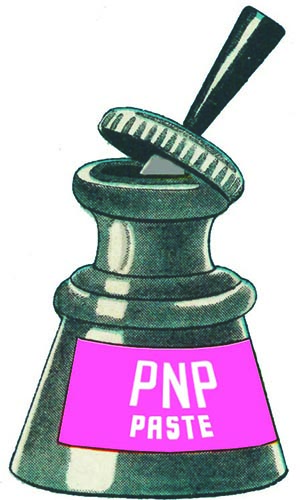Everyone who has ever been to watch a match of Australian Rules football knows the phenomenon. A player is tackled; the crowd roars: 'BALL!' What has happened, the casual spectator asks the expert? Through spat-out pie pastry and beer froth, the expert gives his ruling. 'He got tackled and he didn't get ridda the ball'! Well, maybe. There's a bit more to it than that.
It's the rule everyone thinks they know. In every sport there's one like it. In soccer it's the offside rule, spatially explained so well in Bend It Like Beckham with sauce bottles and pepper shakers. In cricket, LBW provides the context for endless discussion of whether the ball was on track to hit the stumps, shins, thigh or testicles. Rugby league has plenty, from obstruction, to 'playing' at the ball, to the number of players allowed to be in a tackle, and rugby union is a lawyer's feast of a game that you need at least a graduate certificate in law and a sound understanding of torts to be allowed to watch.
The real problem with the holding the ball rule in AFL and what sets it apart from its equivalents is that it's a rule in the subjunctive mood. It requires the umpire to go through a number of hypotheticals in her or his head, at each and every tackle. It's a 'could', 'would', 'should' of a rule. A sensitive grammar of contingency applies.
The short story is, if a player has an opportunity to get rid of the ball, they have to get rid of it—by handballing or kicking it—before they're tackled. If they don't, free kick, and well done the tackling player. The long story, thought, is that there are some other factors to consider.
What if the player didn't have "prior opportunity", or was tackled as soon as the ball fell into their hands? Well, then it's not holding, as long as they "demonstrate" that they made a genuine attempt at it. What if the player got rid of the ball but didn't make a "legal disposal", missing the kick, for instance, dropping it, or throwing it? Well, then it depends on whether the player had "prior opportunity". What if the player was tackled and fell on the ball in a big heap? Then it's a question of whether they dived on it, or were wrapped up without prior opportunity. And all of these questions have to be answered quickly by the sucker with the whistle, a version of Geoffrey Robertson's Hypotheticals played while running.
There's room for partisanship here. We're allowed to be one-eyed, there's nothing wrong with that. But with a rule so nuanced and interesting, we have a responsibility to know about it, and be sensitive to its intricacies. As AFL fans and spectators, we need to give a bit more thought and consideration to when we shout 'HOLDING' or 'BALL'.
LIAM HOGAN, SYDNEY
PS. The AFL has a remarkably good Rules site which explains this and other rules with video examples.
BALLLLLL (Wood engraving by George Rossi Ashton, published 18 June 1881 in The Australasian Sketcher. State Library of Victoria, A/S18/06/81/193).
HOLDING ah ya one-eyed ref BALL BALL BALLLLLL (wood engraving, published 13 July 1874 in The Illustrated Australian News for Home Readers. State Library of Victoria, IAN13/07/74/113).
BALLLLLL wait wtf (wood engraving, published 10 September 1881 in The Australasian Sketcher. Members of the theatrical profession in Melbourne taking part in a charity match on behalf of the family of the late Marcus Clarke; held on the East Melbourne Cricket Club ground; opera house employees against the remaining theatres; all the players are in theatrical costumes. State Library of Victoria, A/S10/09/81/289).
BOOOOO BOOOOO BOOOOO GET HIM OFF (Wood engraving. Shows Melbourne football player named Longden as he is kicked in the head by Carlton Imperial player. Police News, 5 August 1876. State Library of Victoria, PN05/08/76/00).





